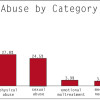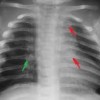Automated Evaluation of AIDS Messages with High‐Risk, Low‐Literacy Audiences
Abstract
A series of televised public service announcements (PSAs) about acquired immune deficiency syndrome (AIDS) was evaluated with 100 black participants attending a Sexually Transmitted Diseases Clinic in Atlanta, Georgia. Since the literacy level of the participants was suspected to be low, questions were administered orally and an electronic data collection technique was used which permitted the participants to push buttons, as opposed to speaking or writing responses.… Read more






